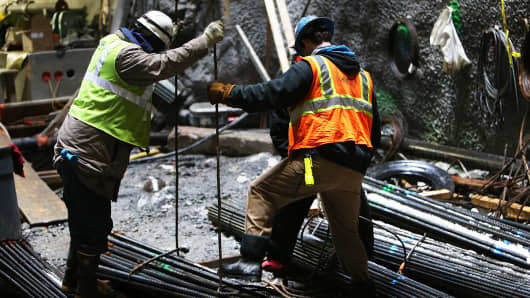Good paying jobs are hard to find these days.
And America's infrastructure—the backbone of the U.S. economy—is producing a lot more of them than just shovel-ready construction projects, according to an analysis by the Brookings Metropolitan Policy Program.
More than 14 million Americans—rightly 1 in 10 workers—builds, operates or maintains the roads, bridges, airports, railways and other infrastructure, the study found. The workforce spans 95 occupations and 42 industries. Those workers are paid better than average, according to the Brookings report.
Workers in lower-paid infrastructure occupations earn 30 percent more than other sectors. And although some 12 percent hold a bachelor's degree or higher, workers generally need less education to qualify for these jobs, according to the report.





